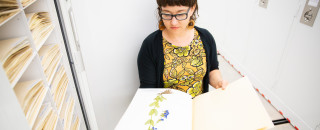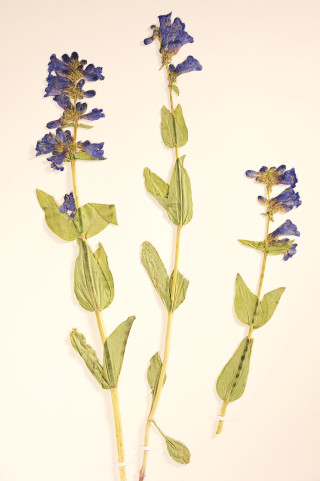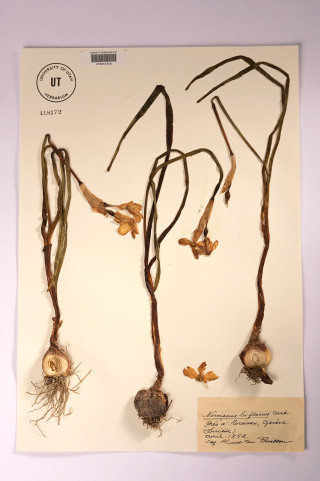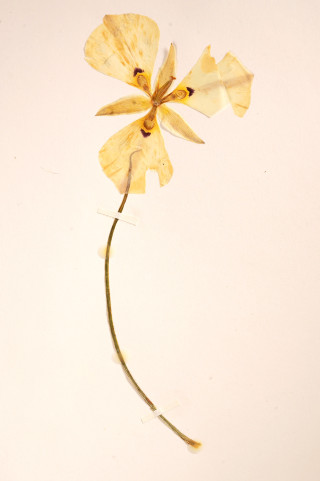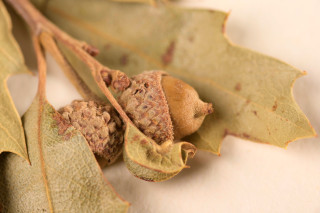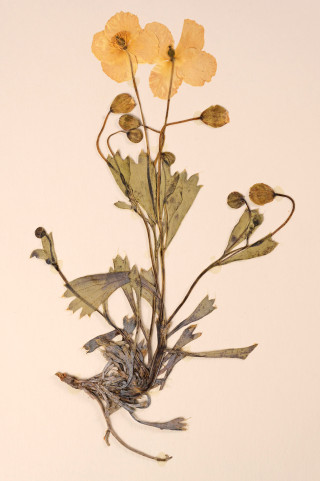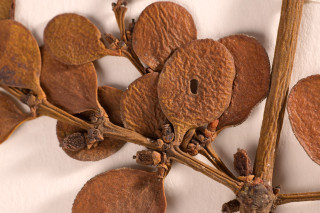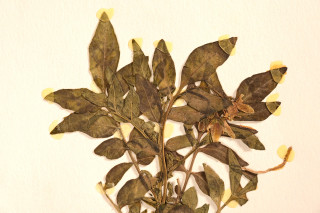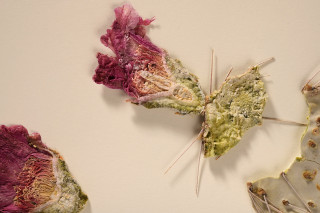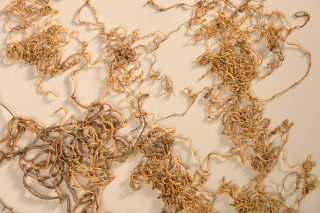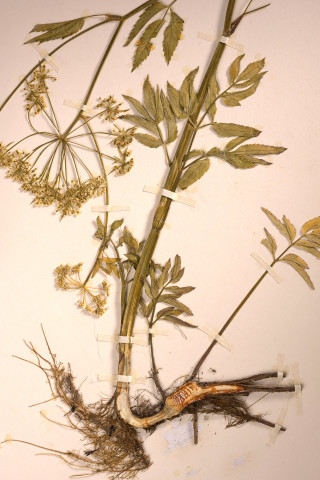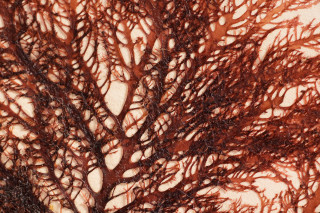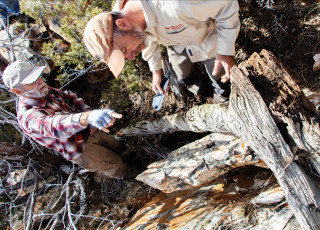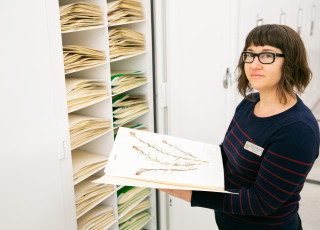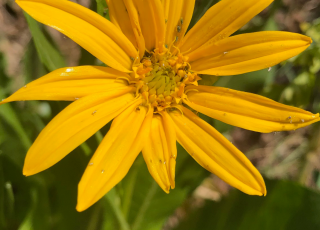Botany
Garrett Herbarium
Herbarium collections are places where dried and preserved plant specimens are stored and used as references as well as for research and education purposes. Basically, herbaria are libraries of plants! The typical herbarium specimen is pressed flat and glued to archival paper along with a label that has detailed information about the specimen (e.g. what it is, when and where it was collected and by whom, and a description of the habitat it was found in.) These flat specimens comprise the bulk of our collections (~140,000 and growing). Our collections focus on the Intermountain West region, but are global in scope.
Fun Facts
- The Garrett Herbarium has the most complete collection of plant specimens from the Wasatch Mountains and Salt Lake Valley, providing a historic baseline to measure historical and recent changes in plant diversity of the region.
- Our plant collections are kept secured from pests and exposure to light as well as free of of chemical treatments, and have never been chemically fumigated, providing researchers a potential source for plant genetic analysis.
- Some collection highlights:
- Hundreds of tree slabs and tree core samples from across Utah
- A global collection of mistletoes
- Vouchers from regional ethnobotanical research
- Reference collections of seeds and pollen
Search the botany collections online at the Intermountain Region Herbarium Network.
Fungarium
A fungarium is a place where fungi are preserved and stored for use in research. Although fungi are not plants, they have historically been stored in herbarium collections. Our fungarium holds about 1,000 specimens from Utah and around the globe. These are dried and stored in boxes along with their collection data.
Search the mycology collections online at the MyCoPortal. For more information about NHMU mycology, visit our Mycology page.
Research
Botanical research at NHMU focuses on reconstructing past environments and how they’ve changed over time by looking at tree rings as well as pollen and charred plant remains found in lake sediment cores.
Our facilities, available to visiting researchers, include a pollen processing lab as well as a state-of-the-art tree ring imaging system.
For more information on botany and biogeography research at NHMU, please visit the Power Lab site.
Did you know...
The Garrett Herbarium, once housed in the U of U’s Department of Biology got its start in the 1870’s, nearly 100 years before NHMU was established!
